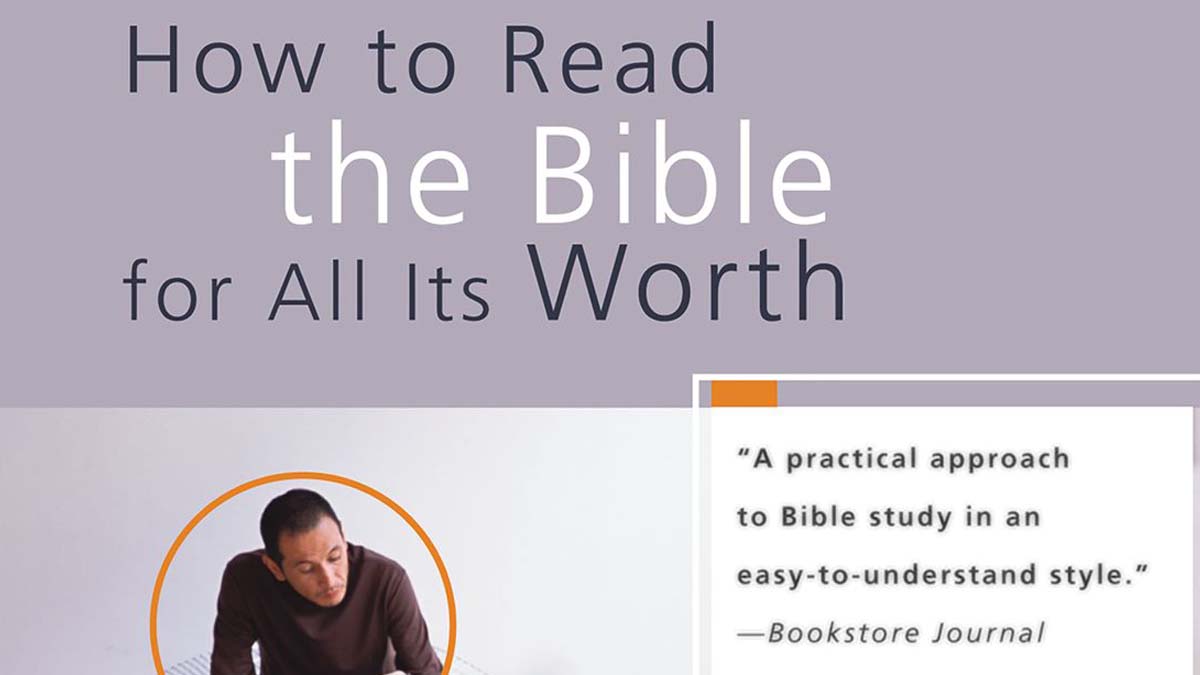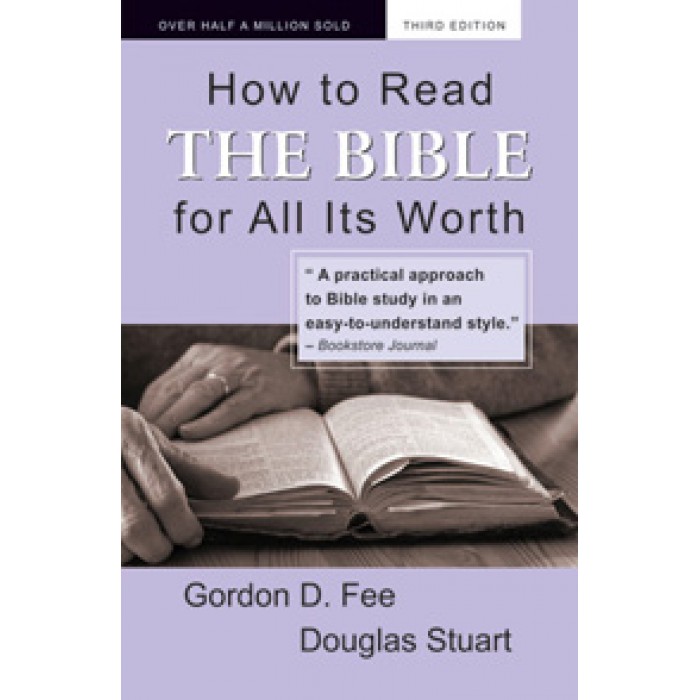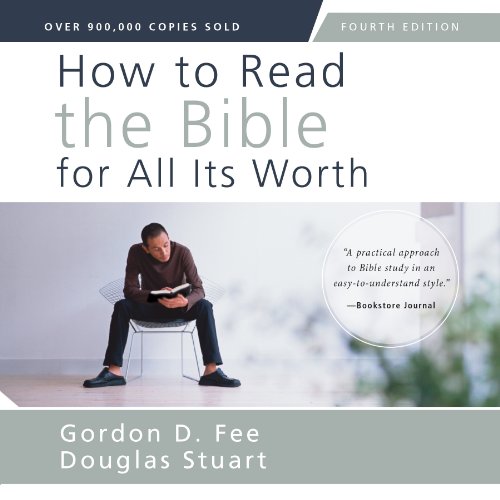This book was co-authored by a New Testament scholar Gordon D. Fee and an Old Testament scholar Douglas K. Stuart.[1] Fee is currently serving as Professor Emeritus at Regent College in Vancouver, Canada, also he is an ordained minister in the Assemblies of God church in 1959.[2] At the same time, Stuart is also an ordained minister and pastored many churches in Massachusetts and New Hampshire, United States.[3] Most newly, he served as the senior pastor of Linebrook Church in Ipswich, Massachusetts, also he is an adjunct professor in many universities around the world.[4]
Purpose of this book
Authors began this book by establishing the need for clear biblical interpretation to avoid the obfuscation of the plain meaning of a text.[5] Many tempted to give unique meaning such as Jehovah witnesses’ denial of Jesus’s deity and Mormons baptizing dead bodies.[6] Somehow, all readers are interpreters whether we agree or not. Thus, this book aims to make the reader a better interpreter. Both Fee and Stuart as seminary professors witnessed many misinterpretations of the Scriptures even among seminarians.[7] They felt there is a need to address it regarding their love toward the Word of God. How to Read the Bible for All Its Worth usesa methodology of appropriate exegesis (then and there) and hermeneutics (here and now) with guidelines to direct its users to a clear understanding of God’s eternal Word, especially, catering details of biblical genres (Epistles, Narratives, Psalms, etc.).[8]
Summary Or Gist of the Book
In the first chapter, the authors argue for the need for exegesis and hermeneutics in this modern world. For example, there is a gap between the biblical world and today’s world in every aspect such as language, culture, and most importantly how the first readers or hearers understood it. So, their “antidote to bad interpretation is no interpretation but good interpretation, based on common-sense guidelines.”[9] Moreover, it is to avoid “what it never meant.”[10]
In the second chapter, the author presses the importance using good English bibles in the light of the science of translation as it already involves interpretation from original texts. There are very useful points made in categorising bibles based on formal equivalence, functional equivalence and free translation, however, there is a strong sense of support given to TNIV but not so good for KJV. The examples used are “coals of fire (Rom 12:20 KJV)” and “burning coals” (Rom 12:20 NIV).[11]
In chapters three and four, the author gives foundational ideas on how to use exegetical and hermeneutical tools in Epistles respectively. In the exegesis of Epistles, authors emphasise understanding the historical context, reading it again and again like a letter, making notes, and consulting references like Bible dictionaries.[12] It is important to know the literary context of the passage, thinking in paragraphs and asking a question, “What’s the point?” of a section.[13] Passages from 1 Corinthians are widely used as examples here. When it comes to the hermeneutics, the authors recommend that the common-sense often directs what readers must acquire through the Epistles. But make sure to avoid inconsistent exegesis first and “a text cannot mean what it never meant to the author or original readers.”[14] The writers warn against extended applications, applications of non-comparable particulars, ignorance of cultural relativity, and task theology.[15]
The next chapter deals with the narrative genre, interestingly forty percent of the Old Testament and the four gospels and Acts from the New Testament come under this category as it reveals God’s story with historical events.[16] In its three levels of narrative: 1. The top (third) level tells a wider image of universal redemptive history; 2. The level two consists of new and old covenants; 3. The first level is small narratives which make up the other twos.[17] Also, three warnings to avoid in stories: 1. There is no hidden meaning; 2. Not to take any moral lessons; 3. They don’t teach directly.[18] This chapter ends with a record of constant mistakes to avoid and ten points for clear interpretation and before using the Book of Ruth as an example.
Chapter six talks about Acts. It is an overall momentum on how the power of the Holy Spirit expands the church into the Gentile world in six levels (6:7; 9:31; 12:24; 16:4; 19:20).[19] It concludes with: 1) Patterns used in Acts is not for today’s use; 2) Sometimes illustrative patterns used; 3) There are repeatable precedents.[20]
The Gospels are dealt with chapter seven. Both the historical context of Jesus and four authors must be considered while reading. We must think horizontally by keeping the parallel pericopes in mind.[21] And think vertically concerning the historical context.[22] The primary purpose of parables is “calling forth a response on the part of the hearer”[23] and also used to proclaim the kingdom of God (chapter eight).
Chapter nine helps to understand the Old Testament Laws on how it is relevant to the contemporary world. The prophets were mostly spokespersons or mediators for God to keep the covenant in Israel. Chapter ten explains to view the Israelite history in a larger (Prophet) framework and smaller (oracle) framework.
Psalms (chapter eleven) are complex for the reader as they were spoken in an antique setting. Each has a purpose in Israelite history and has seven categories. Psalms can be used for comfort not certainly for regulating purpose. The twelfth chapter deals with wisdom literature (Proverbs, Job, Song of Songs and Ecclesiastes) since it is widely misinterpreted and misused part of the Bible. The last chapter deals with the book of Revelation. Its “genre is multifaceted, a combination of apocalypse, prophecy, and letter.”[24] As this book consists sub-genres all the previous studies will come to help to interpret this.
Critical Analysis
As a South Asian reader, when it comes to the New Testament context it is a closer context while comparing with the Western culture. But this does not mean I can understand as everything as it meant for readers from the first century. I have to dedicate myself to study the text with fervent prayer, not with an easy mind-set. I learned that exegesis is the first step and start it by reading the text again and again with different translations if possible (at least four).
Though historical context plays a vital role in expanding the original meaning of the text, at the same level, the literary genre also performs a strong position on whether to use historical context or not when it comes to hermeneutics. Moreover, the genres imply guidelines to us to read the bible in a certain way not based on our pre-conceived thoughts.
Take precautions while creating applications based on text is important. In other words, the application is not important when the text does not give to us. Not to be tempted to study the text in only one way to bring hermeneutics.
If I get a chance, I will conduct a study on this book in my Church fellowship group which I am part of. I think this book is necessary for all Bible-believing Christians. This will impart the idea to see the meaning of texts as a block by following the main theme of the book rather than picking up isolated verses as we like. Also, it avoids having the meaning which the original author or readers not known. I don’t mind reading this book again a few times to remind me of the learned guidelines and pick up the missed points for the sack of the living Word of God.
[1] “Douglas K. Stuart, PhD | Our Daily Bread University,” accessed August 14, 2019, https://christianuniversity.org/professors/douglas-k-stuart-ph-d/; “Gordon D Fee | Theopedia,” accessed August 14, 2019, https://www.theopedia.com/gordon-d-fee.
[2] “Gordon Fee,” Faithlife, accessed August 14, 2019, https://faithlife.com/gordon-fee/about.
[3] “Douglas K. Stuart, PhD | Our Daily Bread University”; “Free Online Bible Classes | Dr. Douglas Stuart,” accessed August 14, 2019, https://www.biblicaltraining.org/speaker/douglas-stuart.
[4] “Free Online Bible Classes | Dr. Douglas Stuart.”
[5] Gordon D. Fee and Douglas Stuart, How to Read the Bible for All Its Worth, 3rd edition (Hyderabad: OM Books, 2005), 21.
[6] Fee and Stuart, 20.
[7] Fee and Stuart, 14.
[8] Fee and Stuart, 15.
[9] Fee and Stuart, 21.
[10] Fee and Stuart, 30.
[11] Fee and Stuart, 42-43.
[12] Fee and Stuart, 59-60.
[13] Fee and Stuart, 64-65.
[14] Fee and Stuart, 74.
[15] Fee and Stuart, 76-87.
[16] Fee and Stuart, 89.
[17] Fee and Stuart, 91.
[18] Fee and Stuart, How to Read the Bible for All Its Worth, 92-93.
[19] Fee and Stuart, 111.
[20] Fee and Stuart, 123.
[21] Fee and Stuart, How to Read the Bible for All Its Worth, 135.
[22] Fee and Stuart, 139.
[23] Fee and Stuart, 152.
[24] Fee and Stuart, 250.


